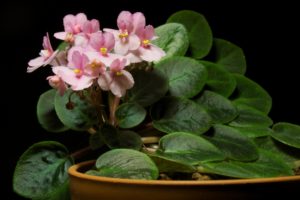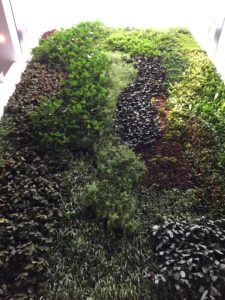So, it’s a stretch. National Houseplant Day may not be a biggee in the history of conservation. But just think for a moment what good things houseplants do for us.

Houseplants actually improve your indoor environment, an example of how nature and humans work together. They absorb carbon dioxide and release oxygen, making it easier to breathe (but keep them out of the bedroom, because at night they do the opposite—suck up your oxygen and double down on carbon dioxide). They are nature’s humidifiers, delivering moisture to the air—especially needed during these cold, dry days of confinement during the winter. A NASA study has revealed that plants can strip up to 87% of noxious compounds out of the air in a day.
And we can eat them. We have a large rosemary plant in our house; just break off a sprig and add it to whatever is cooking. Add a little dill, sage and thyme—and you’ve got a spice cabinet growing in your kitchen (not to mention the stimulus for a Simon and Garfunkel earworm).
But let’s be serious for a moment. According to the late Yale professor (and my long-time friend) Stephen Kellert, natural elements in the human environment are not only good for us, but essential for us. We are inherently natural creatures, and our migration into the built environment of cities is too recent to have rinsed away our affiliation with nature. Biophilia, he called it. And when we don’t get enough exposure to nature, we suffer from NDD—Nature Deficit Disorder.
And there is lots of proof, summarized by Kellert and colleague Elizabeth F. Calabrese. Hospital patients get better faster in hospital rooms with windows—or even murals of natural scenes. Offices of cubicles in windowless rooms reduce productivity; add natural light, views to the outside, windows that open, and productivity soars. Indoor plants, by themselves, can improve productivity by as much as 15%. Kellert and Calabrese suggest adding these features to the human environment: Images of nature, natural materials, natural colors, simulated natural light and air, naturalistic shapes and forms—and several others. It’s just a more modern form of feng shui and vastu, the Chinese and Indian ideas of designing with nature.

A few years ago, I visited the home of the Cambridge Conservation Initiative in Cambridge, England. It is a collaborative of the famous university and several conservation groups, including IUCN. The building itself is interesting, with a four-story green wall in its atrium, an astonishing bit of biophilic design. What was more astonishing, at the opening of the building, named for renowned British conservationist, David Attenborough, the namesake himself entered the building by rappelling from the top to the bottom (learn more about Attenborough here).
So, on January 10, let’s give it up for the little green botanical pets that grace our homes and workplaces. And don’t forget to water them!
References:
Calamia, Maureen K. 2011. Why Plants Make Us Feel Good. The Huffington Post, Oct 04, 2011. Available at: https://www.huffingtonpost.com/maureen-k-calamia/biophilia_b_917161.html. Accessed January 15, 2018.
Kellert, Stephen. 2015. Nature by Design: the Practice of biophilic Design. Human Spaces, June 2015. Available at: http://humanspaces.com/2015/06/01/nature-by-design-the-practice-of-biophilic-design/. Accessed January 15, 2018.
National Today. National Houseplant Appreciation Day – January 10. Available at: https://nationaltoday.com/national-houseplant-appreciation-day/. Accessed January 15, 2018.
